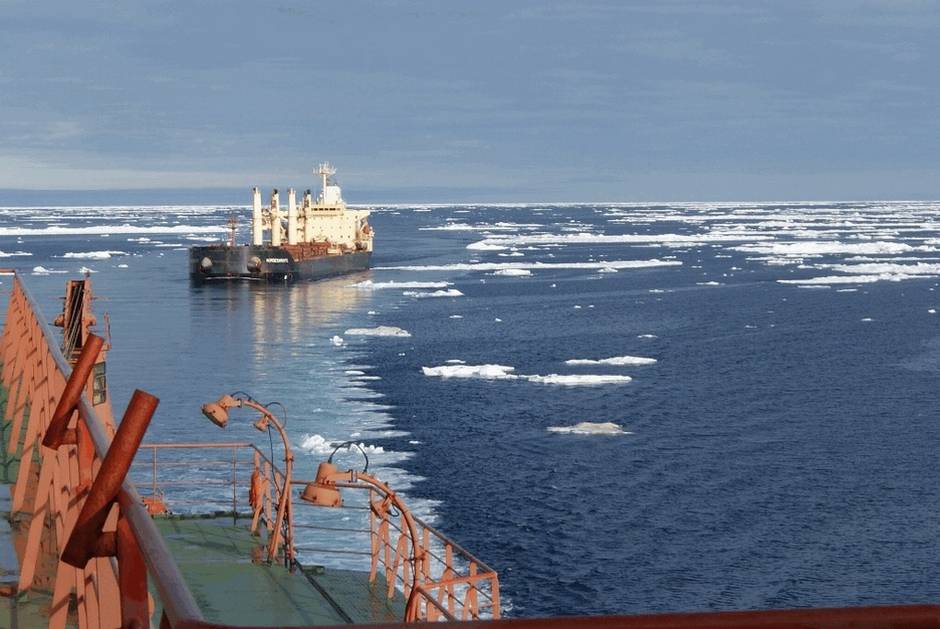Climate change has led to a number of coastal areas in the Arctic today being ice-free in summer, contrary to what was the case only a few decades ago. Areas that formerly were largely covered by two-year or multi-year ice are now covered by one-year ice. In the autumn of 2010 the smallest ice cover since records began was registered. The decline in ice extent and thickness is a trend which, if it continues at the same pace, will result in large areas of the Arctic being ice-free in summer within a few decades. Less ice in the summer north of Alaska and Russia has led to the shipping industry increasingly looking into the possibility of sending larger vessels through the Northwest and Northeast Passage. It is particularly Northeast Passage that is interesting as one could save a lot of time by going through this compared to going through the Suez Canal. It is estimated that a time saving of around 40% could be achieved on the route from Rotterdam to Yokohama. The first larger vessel passed through the Northeast Passage in 2009 (Beluga shipping). In 2010, Tschudi shipping transported iron ore from Kirkenes to China. In most cases, Russian icebreaker assistance is used on the route.
Increase in traffic
From 2010 to 2011 there was an increase in the number of vessels through the Northeast Passage from 11 in 2010 to over 40 in 2011. Although this is a significant increase in terms of percentage, it represents only a small proportion of shipping between Europe and Asia. How great the increase will be in the future is very uncertain as there is a high degree of uncertainty and risk associated with trans-polar shipping. It is also exceedingly weather-dependent, so maintaining good regularity is difficult.
In addition to trans-polar shipping, there is destination traffic to and from the settlements in the Arctic. This is expected to increase proportionally with the development of petroleum-related activities in the Arctic. Increased exploration and drilling activities will lead to increased demand for carriage of goods, personnel and services to fixed and floating installations and require infrastructure development on land. Increased mineral extraction in the north will also likely contribute to an increase in this type of shipping.
Cruise traffic in north
The majority of cruise ship traffic in the Arctic takes place in ice-free waters off Greenland, Iceland, Svalbard, Canada and Alaska. Although the ice edge and calving glaciers are attractive goals for tourist cruise traffic, no significant increase is expected in cruise traffic in the "new" ice-free areas.
New international regulations
A number of factors make shipping in polar areas risk-prone and necessitate strict requirements for vessels operating in these waters. This includes issues such as search and rescue, communications and navigation in ice-infested waters, in addition to challenging climatic conditions. Incidents and accidents in polar regions have potential for major consequences, both in terms of loss of life and the risk of oil spills that could have very serious consequences in these ecologically sensitive areas. The International Maritime Organization, IMO, is working to put in place binding regulations for ships operating these areas. The so-called Polar Code is expected to come into force in 2015.
